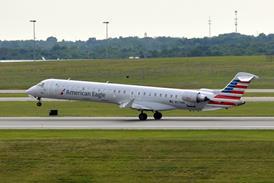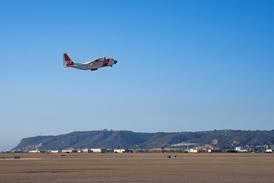In the late-1980s, Pratt & Whitney had a flash of inspiration. Reduction gears for gas turbines already existed, but the only reliable gearboxes for airliner-sized engines were the size of houses. If P&W could scale down the gearbox into a package weighing less than 150kg, they could change the industry.
After 20 years of effort and an investment of about $10 billion, the company found a way to insert a reduction gear into the standard architecture of a turbofan engine for a commercial aircraft.

Airbus
The geared turbofan engine is a breakthrough achievement that recalls P&W’s entry into the turbojet market in the late 1940s. At that time, it was a piston engine specialist entering a sector long after Allison, General Electric and Westinghouse had dominated it.
P&W succeeded in the late-1940s by proposing a design for an engine compressor with a 12:1 overall pressure ratio; roughly twice the limit that more experienced rivals and the US Air Force believed was theoretically possible for a gas turbine.
These are the make-or-break stories of innovation that define the historic arc of the aerospace industry. In hindsight only, the course of innovation seems like an unyielding straight line rising ever and ever higher. In truth, however, the story of innovation is always more complex. Sometimes the straight line of progress drops before it rises again. Sometimes it never recovers.
P&W’s geared turbofan is in trouble. The reduction gear is not directly implicated, but customers and Airbus are increasingly impatient about a series of flaws found in the hardware and software of the first production engines. As P&W publicly feuds with one of its largest customers, it is clear now that it will take longer and cost more to fix those problems than revealed several months ago.
Aviation is especially hard on innovators. Whether the object is carbonfibre fuselage skins, lithium-ion batteries or new engines, the transition from development to operational service is always painful and the missteps are uniquely public.
If P&W has erred so far, it has been only in failing to be candid about the scale of the challenges and the effort needed to overcome them. Adopting a defensive posture only makes the recovery more difficult.
It is also no time for any company to shrink from the industry’s existential obligation to innovate, take risk and sometimes fail. The geared turbofan remains a potentially breakthrough innovation, and the rewards will come.
Source: Flight International


























